
There are thousands — maybe millions — of plumbers in the world. They can all unblock your pipes and fit new faucets. But when you search Google for a plumbing firm, only local providers come up.
Why? Because Google knows that geography matters.
From hospitality and retail to security and manufacturing, most companies focus on serving nearby customers. Your business is probably the same.
If you want to reach more local customers, try local SEO (search engine optimization). This marketing tactic involves optimizing your online presence for a specific location or region.
In this guide, we’ll explain what local SEO is all about and how you can execute this marketing game plan. Let’s get started!
What Is Local SEO? (And Why Should You Care?)
The aim of SEO is to make your website more likely to appear when someone searches for certain terms.
Local SEO has a more specific goal: make your website more likely to appear for people searching within a specific physical location.
Optimizing your website for a local area is a 2-for-1 deal:
- Higher ranking: When people in your target area search for terms related to your website, you’re more likely to rank high in the general search results. This is because Google and other search engines personalize results for each user.
- Local Pack appearance: When Google thinks the user is looking for a local business or venue, the Local Pack appears. This box lives at the top of the results page, highlighting businesses near the user. Your site could be one of them!
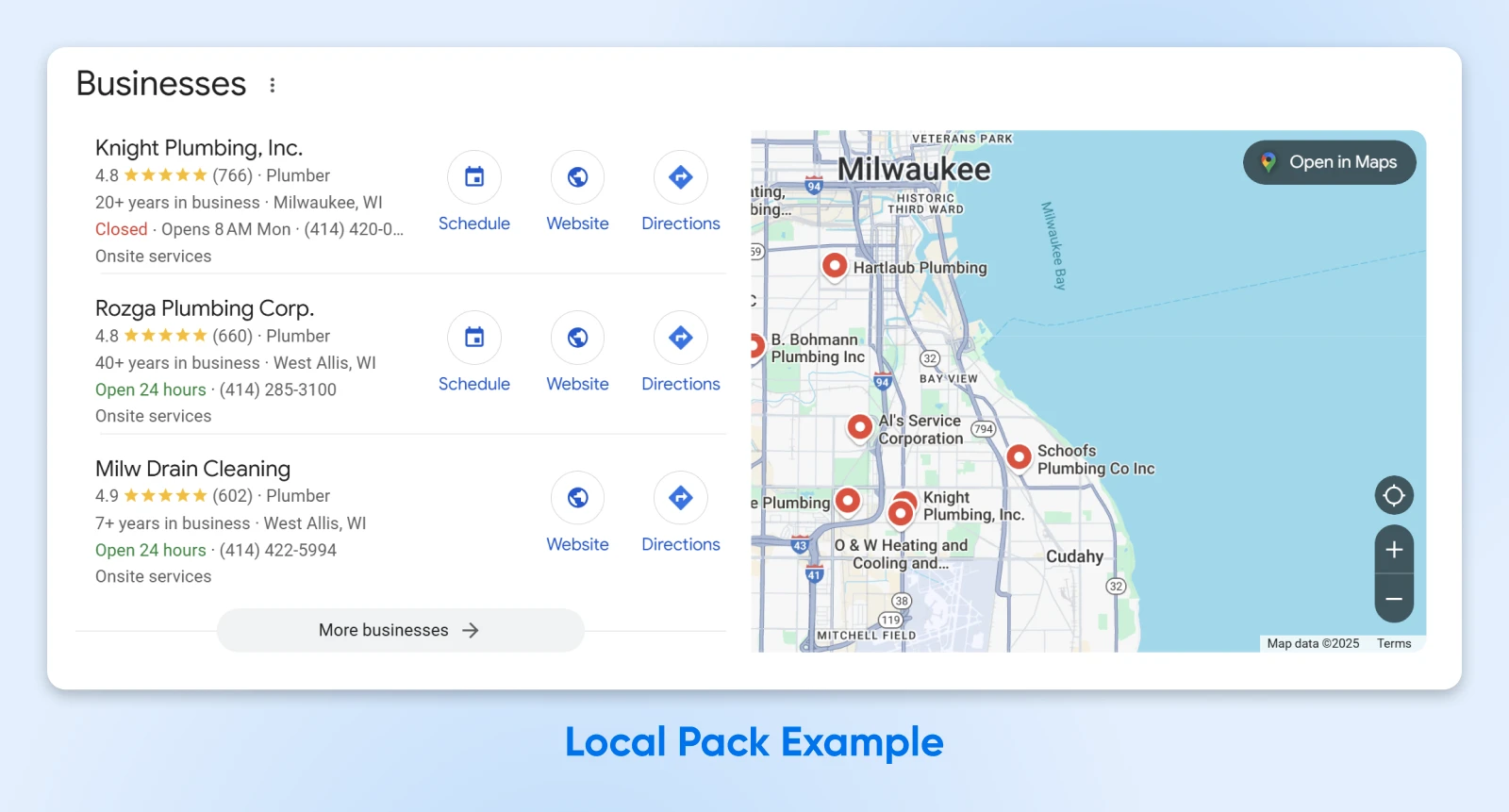
In other words, local SEO is like a cheat code. Instead of battling with every similar website around the world, you’re only taking on local competitors!
How Local SEO Works
To understand what local SEO looks like in the real world, let’s go back to the plumbers.
Mario and Luigi are skilled tradesmen. They can handle pretty much any plumbing task (especially anything to do with big green pipes), and they have a great reputation.
But when local people searched for plumbers, the brothers didn’t come up on Google.
To fix this issue, they made some adjustments:
- They added their business address to their website, along with a section that mentions all the locations they cover.
- They set up a Google Business Profile and filled out details about the business.
- They took listings in local directories online and started to post in local community groups on social media.
- They did some local link-building by reaching out to other business owners.
Within a few weeks, Mario and Luigi appeared more regularly in search results, and soon enough, they became the first name that popped up whenever local people searched for plumbers.
By the end of the year, their calendar was full.
This might sound like a princess-rescue-type fairytale, but it rings true:
- 63.6% of consumers say they are likely to check reviews on Google before visiting a business location.
- 76% of people who search on their smartphones for something nearby visit a business within a day.
- 28% of searches for something nearby result in a purchase.
Want to hear the craziest stat? Less than half of businesses work on local SEO. They are literally throwing away good web traffic.
Not you, though. Be smart like everyone’s favorite Italian plumbers.
The 5 Best Local SEO Strategies
We know what you’re thinking: more SEO tasks?!
The good news is that local SEO is really easy to implement. Plus, you have less competition.
Here are our top SEO tips for bossing local search results, ordered from “easy win” to “requires a bit more effort”:
1. Claiming Your Google Business Profile
If you don’t want to bother with anything else on this list, claim your Google Business Profile.
This is the virtual business card that pops up when you check out a company within the search results. It’s like having a mini website inside Google. And Google itself tells us it’s really important:
- Customers are 2.7 times more likely to consider a business reputable if they find a complete Business Profile.
- Customers are 70% more likely to visit and 50% more likely to consider purchasing from businesses with a complete Business Profile.
So, how do you complete your profile? You just have to claim it.
Head over to Google Maps, and make sure you’re signed in with a Google account. Next, right-click anywhere on the map. Yes, anywhere.
The pop-up menu will give you the option to Add your business. Click that.
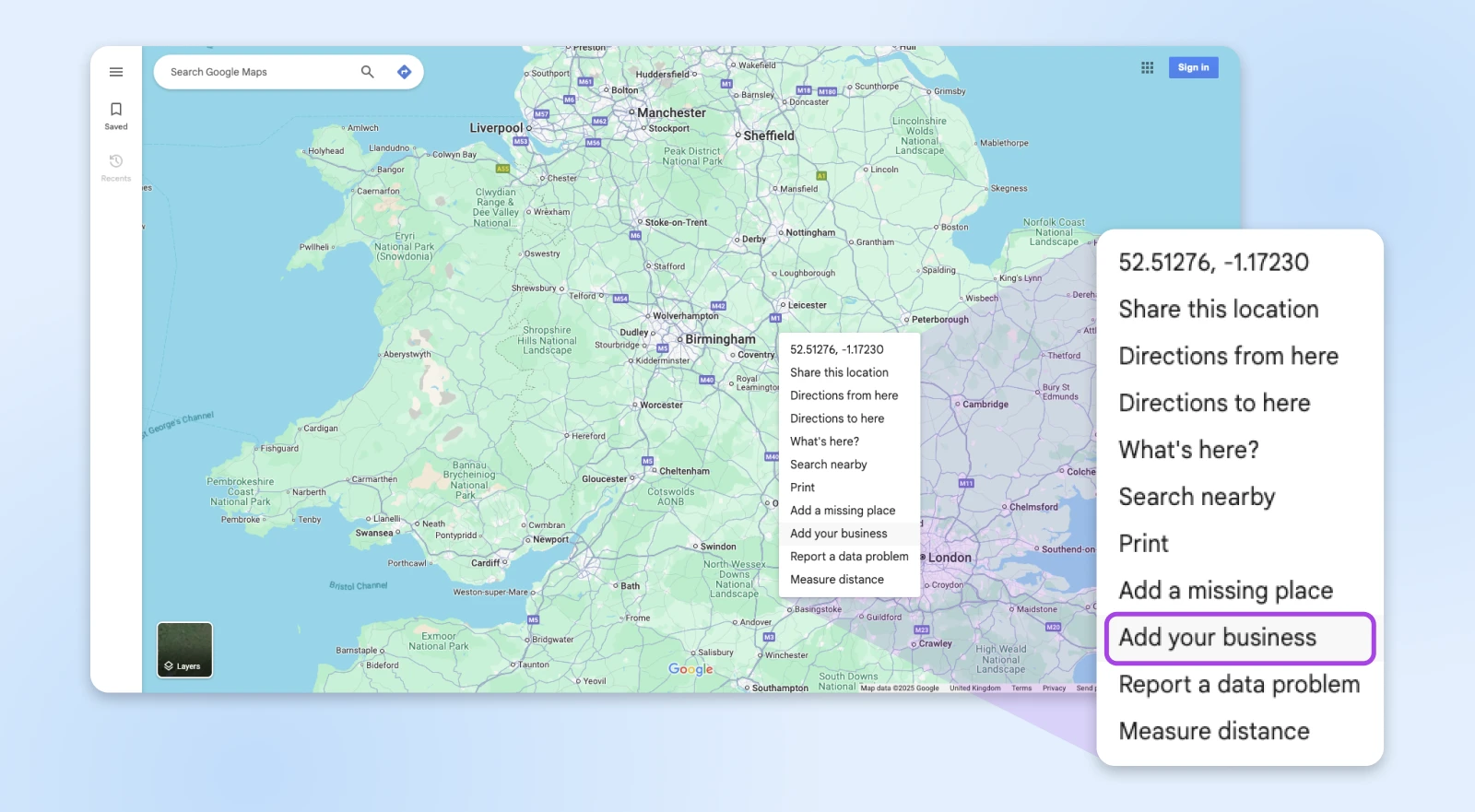

Then, follow the on-screen steps:
- Input the name of your business: If you’re already registered on Google Maps, you can select your business name here.
- Select your business type: Tell Google whether you have a physical store or if you’re more online-based.
- Add your industry and locations: You can include multiple regions.
- Input your contact details: Add your phone number and your website address.


Once you agree to add your business to Google, you will be asked to verify your identity.
With verification complete, you can add lots more info about your company through the Google “My Business” dashboard — from your opening hours to photos of your products. The more you add, the more compelling your Business Profile will be!
We particularly recommend filling out the “Description”; describe what your business does, who it serves, and where it covers. This is prime SEO real estate!
2. Target Location-Specific Keywords
Speaking of SEO, let’s talk about keywords.
Search engines do a decent job of serving up relevant local businesses. Sometimes, though, companies from around the world claim the top search result spots.
Why? Because they have optimized their content for local keywords.
For example, instead of targeting the keyword, “affordable whitening dentist,” they might target “affordable whitening dentist new york.”
Local keyword variants like this make it crystal clear which areas you cover, meaning search engines are more likely to serve up your site to local people. Plus, you’ll rank higher if someone specifically adds a location to their search.
You can probably guess some local keywords that would be important for your site. There are also SEO tools you can use to uncover hidden gold.
Free platforms like Google Keyword Planner give you insights into search volume and competition. Paid tools like Ahrefs and Semrush offer even more advanced features — but if you’re just starting out, the freebies are a great place to begin. (BTW, check out our killer guide on keyword research for more info!).
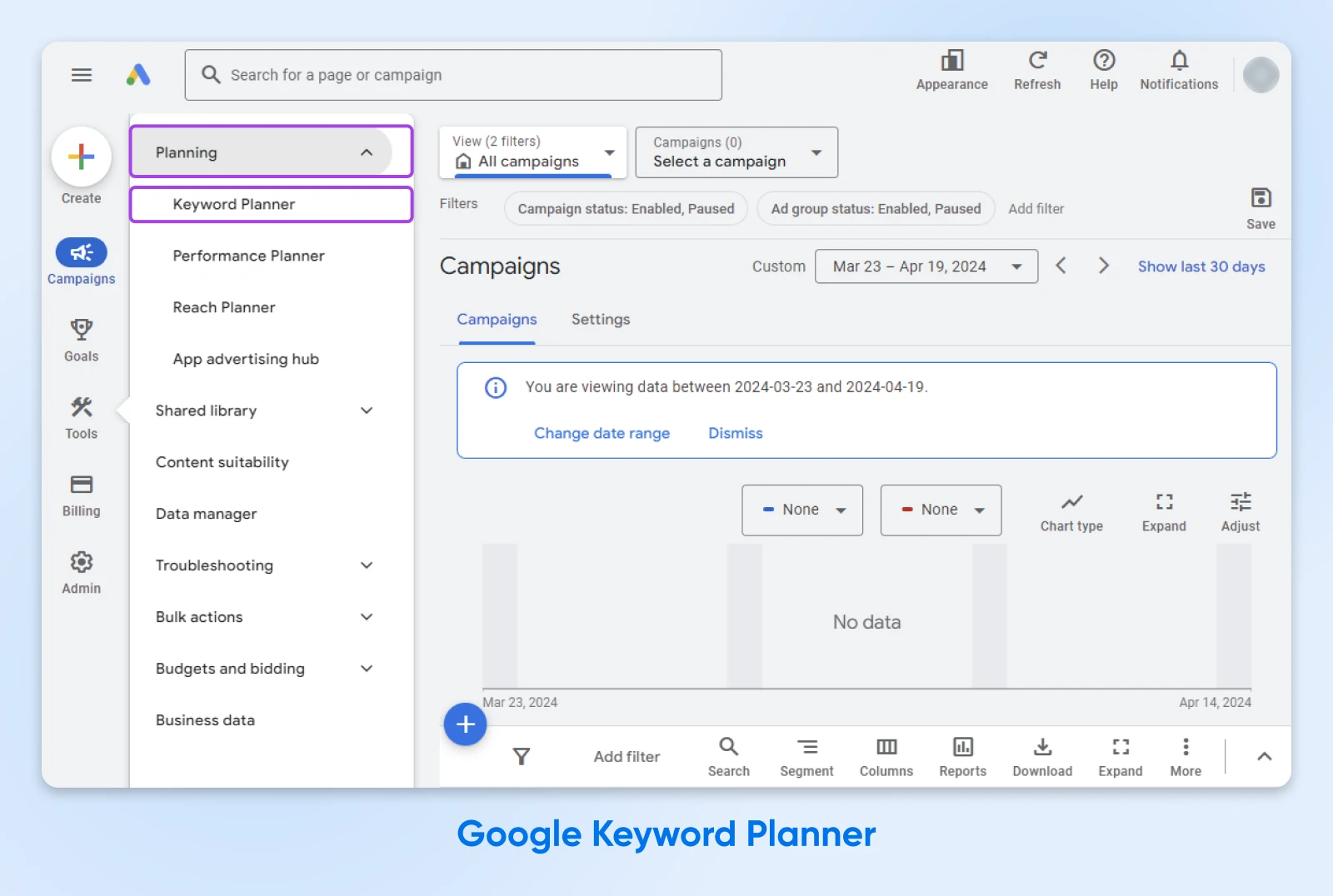

Once you’ve got your list of location-specific keywords, it’s time to sprinkle them in naturally throughout your website content. Don’t just cram them in wherever you can — that’s called keyword stuffing, and Google hates it.
Instead, think about how your customers would naturally search. Use your keywords in your page titles, headings, meta descriptions (those little snippets that show up in search results), and within the body of your content.
For example, instead of just “Beautiful Bouquets,” try a title like “Beautiful Bouquets for Every Occasion in Austin, TX.”
And in your meta description, you could say something like, “Find the perfect bouquet for your loved one in Austin. Same-day delivery available!”
See? It’s all about being specific and helpful.
3. Get Some Local Backlinks
Okay, we’ve picked the low-hanging fruit. Now, it’s time to do some real work.
Backlinks (i.e. links to your site on other websites) are an essential ingredient in SEO. In the eyes of search engines, they are a vote of confidence in your content. The more backlinks you have from high-quality websites, the more likely you are to rank highly.
Backlink
A backlink is simply a link from one website (back) to another. If site owner A links to site owner B’s content, B has a backlink from A. Conversely, if site owner B links to site owner A’s content, A will have a backlink from B.
The same applies to local SEO. If other websites with local ties link to your website, search engines will assume your business is big news in your town or region.
So, how do you snag these valuable local backlinks? It’s all about building relationships and getting involved in your community, both online and offline.
Start with any local businesses you already have connections with. Reach out and see if they’d be willing to link to your website. Mutual backlinking is common practice.
Next, explore online directories specifically for your city or region. Getting a business listing on these sites not only gets you a backlink, but also increases your visibility to potential customers in your area.
Another great way to build local backlinks is by creating high-quality, shareable content. For instance, you could publish blog posts about local events, guides to local attractions, or even interviews with other local business owners.
When other websites find your content valuable, they’re more likely to link to it, boosting your SEO juice.
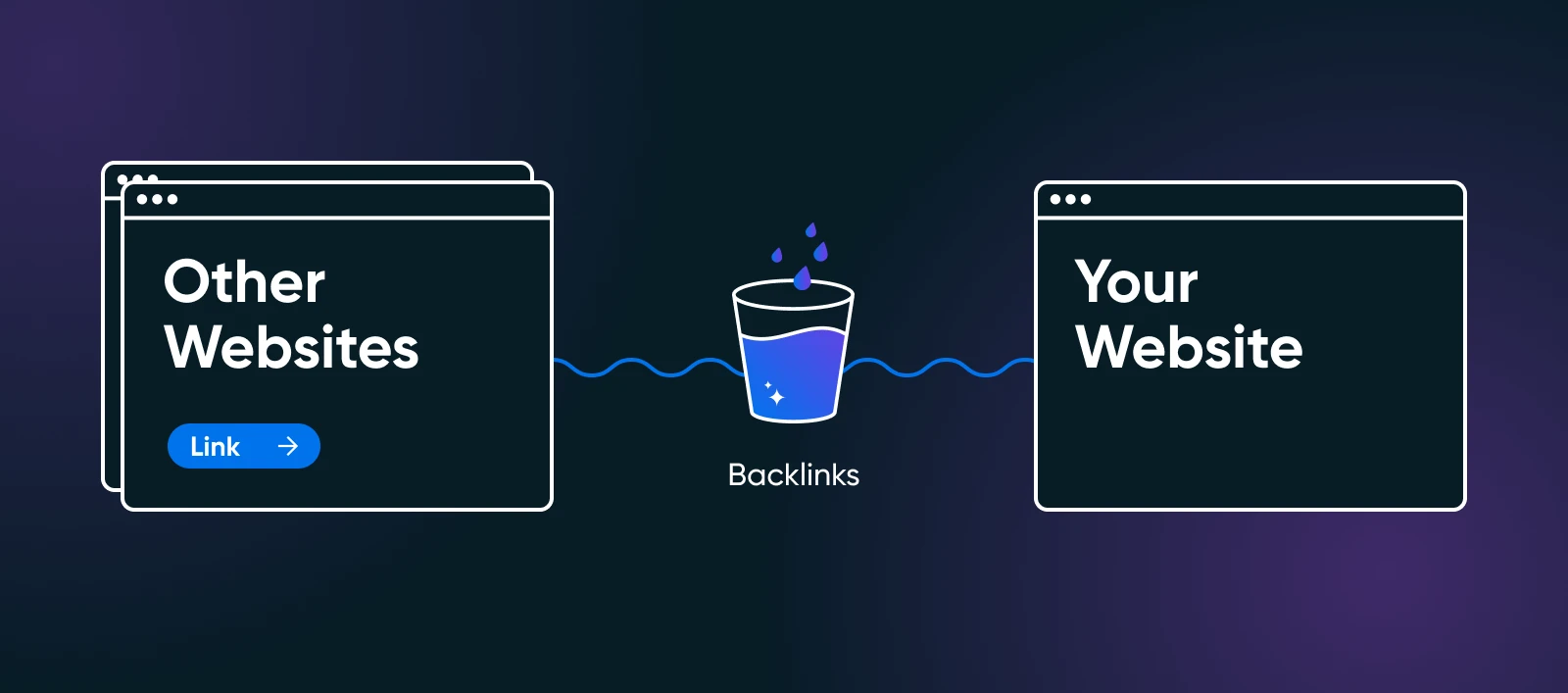

And here’s a pro tip: sponsor local events or charities. Sponsors often get a mention (and that all-important backlink) on the event or organization’s website. It’s a win-win: you’re supporting your community and boosting your SEO.
Building local backlinks takes time and effort, but it’s totally worth it.
4. Build Trust With Reviews and Ratings
What makes Google choose one local business over the next? Sometimes, it’s about on-page SEO or backlinks. But there’s also an online reputation to consider.
Businesses that receive a heap of glowing reviews from customers on Google tend to feature more prominently in search results. And because they have great ratings, these businesses also attract more interest from potential customers.
Sounds like a good place to be. The question is, how do businesses attract all those positive reviews?
The key is to make it really easy for happy customers to leave a review. You can do this by sending them an after-sales email that includes a link to your Google Business Profile. You could even offer customers a small incentive (like a voucher) if they follow through.
Of course, not all reviews are super favorable. So, it’s important to respond to negative comments professionally and resolve problems where possible.
Sometimes, just acknowledging the issue and offering to make things right can turn a disgruntled customer into a loyal one. It also proves to potential new customers that your heart is in the right place.
While good reviews alone won’t massively enhance your visibility in local search results, they do contribute to your overall local SEO strategy.
5. Start Creating Hyper-Local Content
Wow, you made it to the fifth tip! You’re really committed to this local SEO thing, huh?
If you want to blow your local competition out of the water, try publishing hyper-local content — content that is tailored to a specific region, city, or even neighborhood.
There are two main advantages of going hyper-local:
- When you mention someone’s specific area by name, your business appears as the local option. Many people prefer working with a local small business rather than an international giant.
- Your hyper-local content is great for capturing local keywords. If someone tries to find a “hamburger restaurant on carter avenue,” you’ve got the local search rankings covered.
So, what kind of content can you create?
- Let’s say you own a coffee shop in a small town. You could write blog posts about local events happening nearby, like the farmers’ market or the annual summer festival.
- If you’re a real estate agent, you could create neighborhood guides highlighting each area’s best schools, parks, and restaurants.
The key is to think about what your target audience is interested in and create content that’s relevant to their local lives.
For example, Jackie O’s Brewery in Athens, Ohio, has a Sustainability blog on their website where they post articles on efforts and partnerships with local organizations.
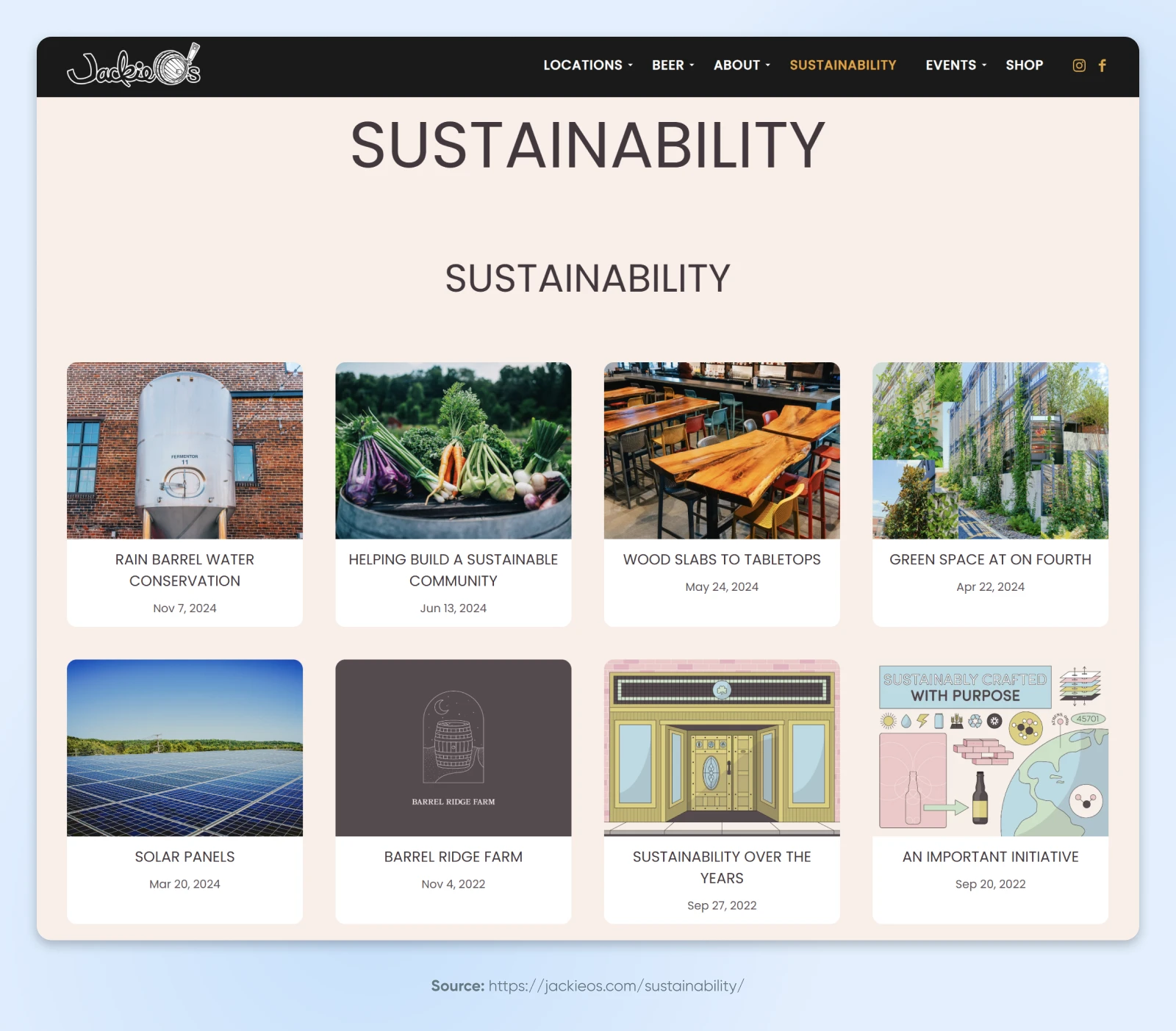

And don’t be afraid to get personal! Share your own experiences and insights about your local area. What are your favorite local spots? What makes your community special?
The more authentic and engaging your content is, the more it will resonate with your audience — customers searching for stuff.
We’ve got the game plan sorted. The last step is to put it into practice.
You don’t need a lot of tools to improve your local SEO (another advantage of this marketing strategy). But there are a few apps that will help you optimize for local customers.
Here’s our picks!
For Local Keyword Research
- Google Keyword Planner: The OG of keyword research. It’s free and straight from the source.
- AnswerThePublic: Find what locals are actually asking. Free for basic searches.
- Ubersuggest: Neil Patel’s gift to small businesses. Limited free searches daily.
For Google Business Profile Management
For Monitoring Reviews
- Google Alerts: Get an email update whenever your business is mentioned online.
- Yelp Business Center: Track and respond to Yelp reviews.
- Mention: Freemium social listening tool. The paid plans are also super affordable.
Local SEO Health Checkers
Local Rankings Trackers
- Google Search Console: Your direct line to Google’s brain.
- Ahrefs Webmaster Tools: Not as deep as the full Ahrefs suite, but a useful collection of free search analysis tools.
- Semrush: More free SEO tools, with upgrades available for advanced features.
Pretty much all the tools above are free or super affordable. It’s only worth coughing up more if you’re working on local optimization as part of a wider SEO campaign.
Want a deeper dive? We made a comprehensive guide to SEO tools for business owners just like you!
Local SEO Made Easy
From filling up your Google Business Profile to getting listed in business directories, you now know the best practices in local SEO.
Compared with many other marketing strategies, going local is an easy win. It doesn’t take any deep research or heavy editing on your site. You can even make progress without changing your website at all.
Just remember our top local SEO tips:
- Claim your Google Business Profile and add your business information.
- Find local keywords and target them with your content.
- Get backlinks from other locally tied websites.
- Encourage your customers to leave reviews.
- Supercharge your SEO game with hyper-local content.
Remember, completing these tasks will mean diddly squat if your site constantly goes down.
If you want a more reliable hosting experience, try switching to DreamHost. Our plans come with a 100% uptime guarantee, and they are super affordable. We even offer a handy SEO toolkit!
Sign up today to put your website on a rock-solid foundation.

Search Engine Optimization Made Easy
We take the guesswork (and actual work) out of growing your website traffic with SEO.
Did you enjoy this article?






